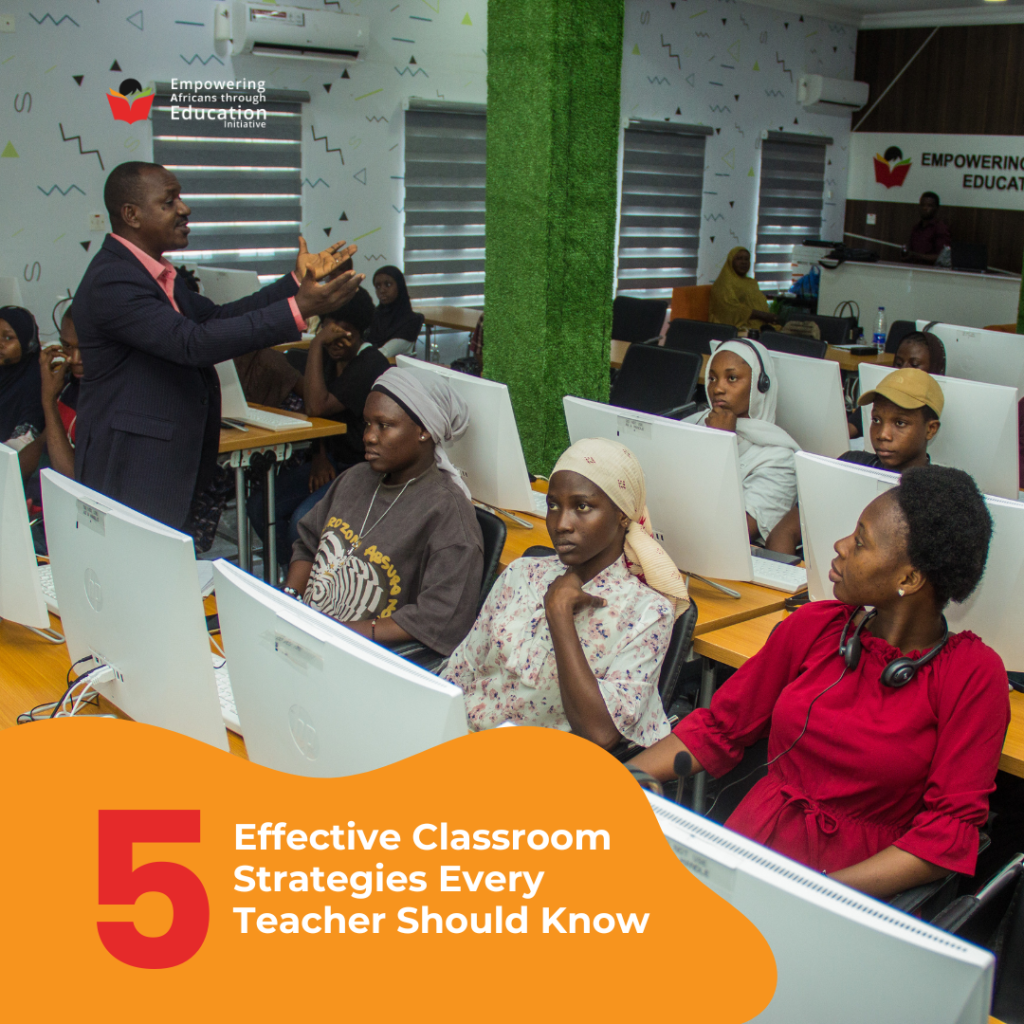5 Effective Classroom Strategies Every Teacher Should Know

Teaching is both an art and a science. A dynamic classroom environment, where students are engaged, curious, and motivated, doesn’t happen by chance. It’s the result of intentional strategies that foster learning and build confidence. Whether you’re a seasoned educator or new to the classroom, these five tips can help create an enriching and effective learning environment for your students.
1. Foster Active Engagement
Gone are the days when teaching was a one-way conversation. Today’s students thrive when they’re actively involved in the learning process. Keep your classroom energized by incorporating hands-on activities, discussions, and interactive tools like polls and Q&A sessions. Group projects and collaborative exercises encourage students to express their ideas, build communication skills, and learn from each other. By keeping students at the center of the learning experience, you’ll not only make lessons more enjoyable but also increase retention and understanding.
2. Set Clear Expectations
A clear structure sets students up for success. Begin each term or project with an outline of classroom rules, assignment guidelines, and academic expectations. Consistency in your rules and boundaries is essential; it not only fosters respect but also helps students feel secure and organized. Clear guidelines allow students to focus on learning rather than on understanding fluctuating requirements or expectations.
3. Incorporate Real-World Examples
One of the most effective ways to bring lessons to life is to relate them to real-world experiences. Real-world examples not only increase interest but also help students understand how theoretical concepts apply beyond the classroom. Whether you’re teaching science, history, or math, connecting the material to real-life situations can deepen students’ understanding and make the lessons more memorable.
4. Provide Constructive Feedback
Feedback is an essential part of growth, but it must be constructive to be truly effective. When giving feedback, aim to be timely, specific, and supportive. Instead of focusing solely on what was incorrect, highlight strengths and offer actionable steps for improvement. Constructive feedback encourages students to learn from mistakes without feeling discouraged, which builds confidence and a growth mindset.
5. Adapt to Diverse Learning Styles
Every classroom is filled with students who have different learning preferences, strengths, and needs. Using a one-size-fits-all approach can leave some students feeling left out or frustrated. Tailor your teaching methods to accommodate a variety of learning styles—visual, auditory, kinesthetic, and more. This diversity in approach ensures that all students have the opportunity to understand and engage with the material in a way that suits them best.
Transforming your classroom into an effective learning space requires dedication and flexibility. By gradually implementing these strategies and adapting them to the unique needs of your students, you can create an environment where everyone feels valued and empowered to succeed. Remember, the journey of teaching is about continuous learning—not just for your students but for you as well. Keep experimenting, reflecting, and growing, and you’ll make a lasting impact on the lives you touch.